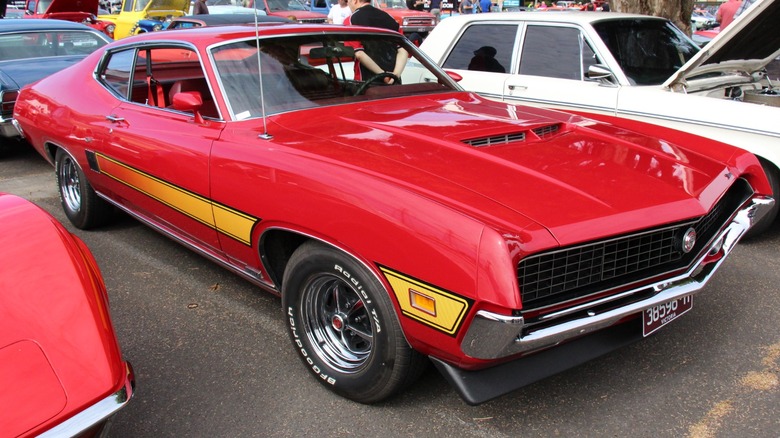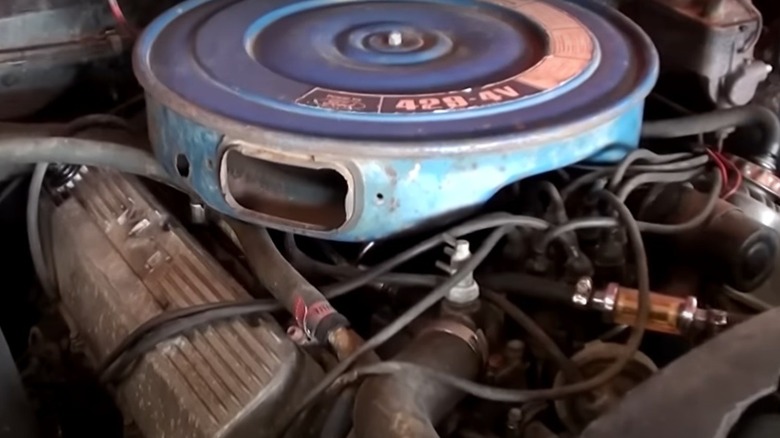Ford's 429 Cobra Jet Vs 429 Thunderjet Engines: What's The Difference?
Ford introduced the 385 big block V8 engine series in the late 1960s as it phased out the MEL (Mercury Edsel Lincoln) big block design. The 385 big block, named for the 3.85-inch crankshaft stroke used in its initial 460 cubic-inch displacement offering, would eventually replace the Ford FE big block as well. While the 460-cubic-inch 385 series V8 powered Ford's largest car models, its 429 cubic-inch derivative soon found favor with the Ford performance crowd.
The Ford Boss 429 and 429 Super Cobra Jet engines were at the top of the performance big block Ford mountain in the late 1960s and early 1970s. While those engines were being shoehorned into a select few cars, less pretentious 429 big blocks soldiered on under the Cobra Jet and Thunderjet banners.
The Thunderjet was the least powerful of its 429-cubic-inch cohorts with its 360-horsepower rating. A step up to the 429 Cobra Jet provided an additional 10 horsepower, according to Ford's advertised numbers at the time. While the reported power ratings are often deemed suspiciously low, there's no denying the Cobra Jet's enhanced parts list.
Why is the 429 Cobra Jet more powerful than the 429 Thunderjet?
While the factory-reported power ratings are likely well below the actual output delivered by either of 429 big blocks under review here, we'll stick with them for our comparison. As mentioned, Ford reported 360 horsepower from the 429 Thunderjet with torque values at 480 lb-ft. The decidedly higher performance 429 Cobra Jet, on the other hand, was rated at 370 horsepower but lost 30 lb-ft of torque somehow with its 450 lb-ft rating.
The 429 Thunderjet and Cobra Jet featured similar two-bolt main bearing 385 big block architecture, although the 429 Cobra Jet block featured stronger webbing around the main bearings. The most significant differences between the two were compression ratio, cylinder head construction, and carburetors.
A 600 CFM (Cubic Feet per Minute) four-barrel Autolite carburetor fed fuel into the 429 Thunderjet through 2.09-inch intake valves. The fuel-air mixture was compressed at a 10.5:1 ratio before ignition and the spent gas vented out of the cylinder through 1.65-inch exhaust valves. Ford 429 Cobra Jet engines were fed by a 700 CFM Rochester carburetor. Larger intake and exhaust valves, 2.24 and 1.72 inches respectively, were housed in free-flowing cylinder heads with smaller combustion chambers. The smaller chamber heads raised the compression ratio to 11.3:1.

